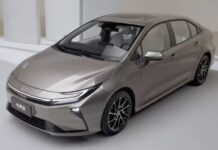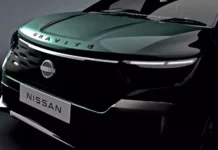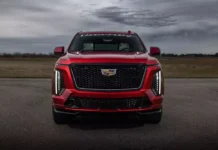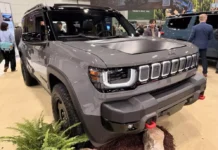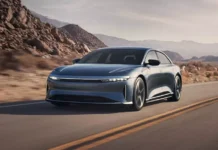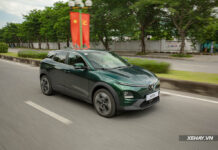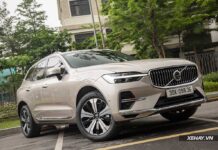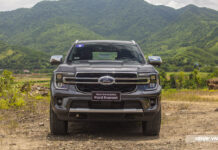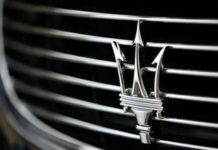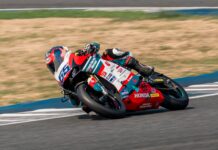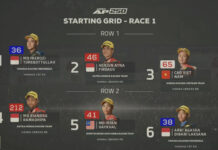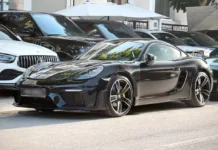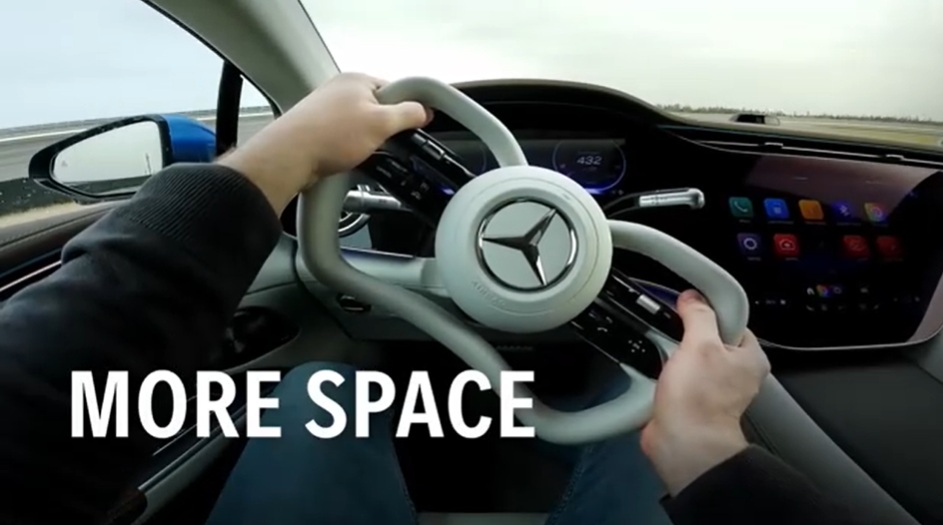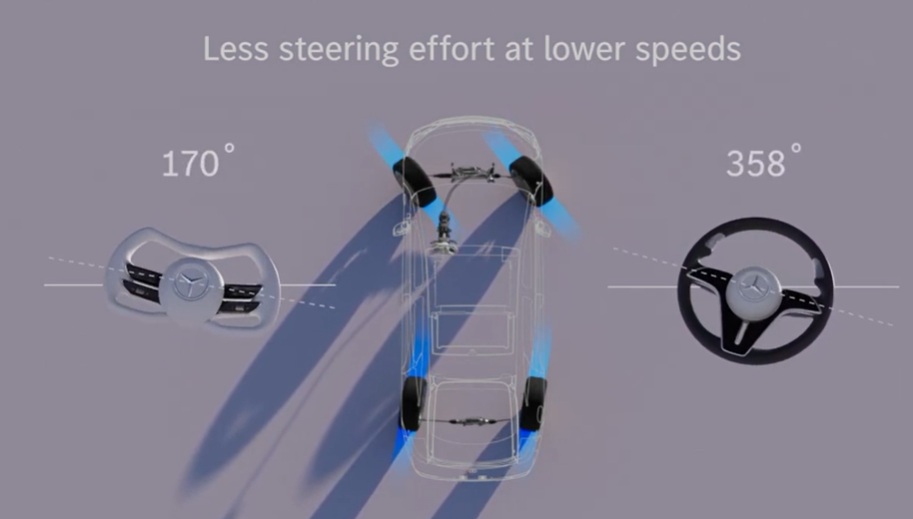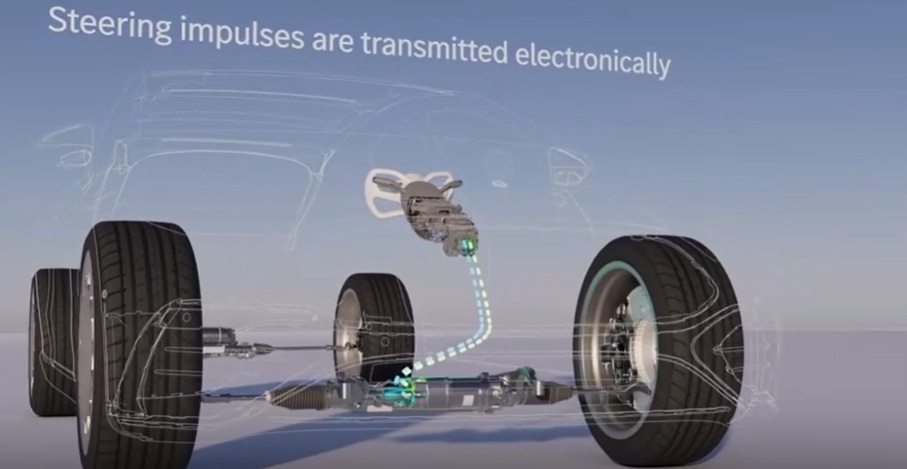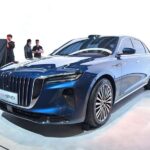Mercedes-Benz is at the forefront of a driving experience revolution with its steer-by-wire technology and Yoke steering wheel, completely eliminating traditional mechanical connections.
It’s no surprise that Mercedes is developing steer-by-wire technology, as major brands like Tesla, General Motors, Toyota, and Geely are all pursuing this solution. Steer-by-wire uses electrical wiring instead of a mechanical steering mechanism, allowing the vehicle to receive control signals from the steering wheel through electronic sensors. This opens up immense potential for autonomous driving and more flexible cockpit designs.
While the first model to be equipped with this system is yet to be determined, a recent sighting of an EQS test vehicle with a rectangular steering wheel – often referred to as a Yoke – indicates that this model could be the pioneer for this technology when it launches next year. Additionally, the S-Class, the flagship sedan with an internal combustion engine, could be the next in line to feature the new steering system.
According to Mercedes, steer-by-wire not only offers a superior driving experience but also enhances flexibility in various traffic conditions. The system allows for adjustable steering wheel ratios depending on speed, reducing the amount of turning required during maneuvers like U-turns or parking. On the open road, steering feedback is fine-tuned for a more confident and precise feel.
Another notable aspect is the Yoke steering wheel design. Unlike traditional round steering wheels, this open-style wheel frees up space between the driver and the dashboard, making entering and exiting the vehicle more convenient and improving visibility of the digital instrument cluster. Mercedes believes this design is well-suited for future electric and autonomous vehicles and could even serve entertainment purposes, such as gaming when the vehicle is stationary.
Furthermore, the system is highly adaptable, compatible with various vehicle platforms, including electric, hybrid, and traditional combustion engine vehicles, while also accommodating a high degree of personalization for drivers.
Despite Mercedes’ significant investment in this technology, the departure from the traditional steering wheel design has sparked controversies. In fact, Tesla faced similar mixed reactions when they introduced the Yoke steering wheel on the Model S Plaid.
With a rectangular steering wheel, low-speed maneuvers like U-turns or parking become more challenging, especially when quick steering inputs are required in tight spaces. Many experts argue that the Yoke is better suited for racing or fully autonomous vehicles rather than daily drivers. This has led some to question whether Mercedes is prioritizing fashion over practicality and safety.
Mercedes assures that the steer-by-wire system has undergone rigorous testing, covering over a million kilometers on test tracks, outdoor test areas, and real-world traffic conditions. The system is designed with redundancy in mind, capable of functioning even in the event of a failure, thanks to backup power, internal sensor data, and the ability to intervene through rear-wheel steering or individual brake control.
In emergency situations, these support features ensure that the driver can still safely control the vehicle, even without the mechanical connection between the steering wheel and the wheels.
Mercedes-Benz also emphasizes that they are not new to exploring alternative steering systems. From the Patent Motorwagen in 1886 with its steering tiller to the first round steering wheel on the Panhard 4HP in 1894, the German automaker has a history of experimenting with bold ideas. In recent years, concepts like the F200 Imagination (1996) and the F-Cell Roadster (2009) showcased joystick-style steering wheels and non-conventional steering systems.
Currently, vehicles like the Tesla Cybertruck, GMC Hummer EV, Rolls-Royce Spectre, Lotus Eletre, and Lexus RZ 450e are among the few commercial offerings equipped with steer-by-wire technology. Notably, the Lexus RZ is the first to bring this technology to Europe, expected later this year.
Mercedes-Benz’s foray into electronic steering and Yoke steering wheels signifies a bold step forward in redefining the driving experience. While the convenience and sense of control remain subjects of debate, there’s no denying that this technology unlocks new possibilities for future generations of vehicles. The success – or failure – of Mercedes’ steer-by-wire endeavor will be a critical benchmark for this trend in the global automotive industry.
TH (Tuoitrethudo)
The All-New Hongqi H9: An Elevated Experience of Luxury and Technology
Unveiled at the 2025 Shanghai Auto Show, the second-generation Hongqi H9 immediately captivates with its elegant design and cutting-edge technology. This all-new plug-in hybrid (PHEV) variant is expected to go on sale in the third quarter of this year, although pricing and specifications remain tightly under wraps for now.

